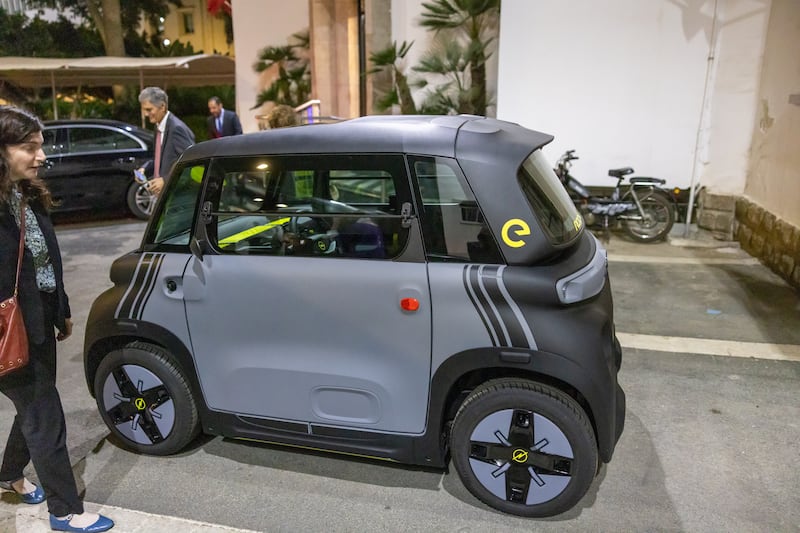Morocco’s Tanger Med port, just 15km from the European mainland, has become an example of how an African country can use its maritime location and gain access to lucrative global markets.
Near Tangier across the Gibraltar Strait from Spain, Tanger Med was built in 2007 with an initial investment of €1 billion and has grown to become the backbone of Morocco’s industrial development.
Now it is helping Morocco to drive its motor business, which is fast becoming the country’s leading industrial sector. It is valued at $4 billion in 2021 and expected to reach $5.5 billion by 2027.
Morocco has dethroned South Africa as Africa’s leading car maker. Both countries produce cars for export and also have large domestic markets.
Morocco has the capacity to produce more than 400,000 cars a year.
The country is capitalising on its closeness to European, African and Mediterranean markets, a growing industrial zone and relatively cheap local labour.
Its trade liberalisation and search for global investments has made Morocco an economic bridge between Europe and Africa. It also took advantage of free trade agreements with Europe, the US and the UAE.
Morocco’s GDP almost tripled in less than 20 years to $113 billion last year, from $39 billion in 2000. And the country’s economic ambitions don’t stop there.
Previously, European car makers outsourced production to eastern Europe to drive down wages. By establishing factories in Eastern Europe, makers were looking to improve profitability.
Now it is Africa's turn. In just a few decades, Morocco has moved from an insignificant car maker to one that challenges Eastern European producers including Poland, Bulgaria and the Czech Republic.
Georg Leutert, director of automotive and aerospace industries at IndustriAll Global Union, told The National that the move was mainly caused by Eastern European labour shortages and the fact that North African labour costs are much lower.
Today, more than 60 per cent of Africa’s population is under the age of 25. By 2030, young Africans are expected to constitute 42 per cent of global youths.
This would make the continent an exception in a world of slowing population growth.
Deep economic inequalities and environmental challenges on the continent are driving Africans to leave for Europe in search of security and prosperity.
Global affairs analyst and former US State Department official Jonathan Wachtel told The National that Morocco's economic activity can influence this phenomenon.
“Many African migrants make the perilous journey across the Mediterranean for purely economic reasons,” Mr Wachtel said.
“The more North Africa becomes a hub for manufacturing new technology, the more jobs become available to its people.
"Greater economic activity will lift families out of poverty, which can stem the exodus to Europe.”
He said there was a correlation between poverty and extremism, particularly among young people.
"So the more this demographic is employed, the better chances of nipping extremism before it becomes attractive,” Mr Wachtel said.
Moroccan youths, who make up one third of their country's population, represent a massive pool of untapped potential.
The Minister of Trade and Industry, Ryad Mezzour, said 42 per cent of jobs were lost during the coronavirus pandemic but by the end of June, all the jobs were recovered, and more besides.
Morocco has also withstood the global economic challenge the war in Ukraine has put on countries worldwide.
Morocco's Ministry of Trade and Industry said that even though the current global context is “difficult”, its motor industry has not been affected by the war in Ukraine.
“We are still the leading exporter of passenger cars in Europe this year and have achieved Dh100 billion [$9.48 billion] in export earnings," the ministry said.
What’s next for Morocco?
Stellantis, the world's fourth-largest car maker, last year announced that its German subsidiary, Opel, would begin electric vehicle production in Morocco.
It also plans to increase spending on parts made in Morocco from €600 million to €3 billion by 2025.
The country has started producing its first fully "Made in Morocco" car. The Opel all-electric vehicle is the first of its kind to be made in North Africa.
With a top speed of 75kph, the compact car was completely designed and made in Morocco, Mr Mezzour told The National.
With Stellantis doubling its capacity, the ministry said Morocco’s makers were set to reach 1 million locally made cars a year by 2030, for the Middle Eastern and African markets.
The challenge in coming years will be maintaining a lead in motor production in Africa and ensuring economic prosperity for its people.
Mr Leutert warned that too strong a focus on low labour costs could hamper technological progress and lead to “social unrest when the young workforce does not experience continuous socio-economic progress".







